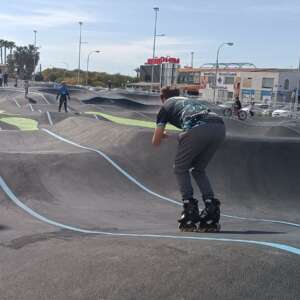
Each year, more than 900 people in Spain die in traffic incidents on conventional roads, roads that have a single traffic lane in each direction and do not have a physical separation between both directions. For this reason, the DGT has started a special campaign, which runs until Sunday the 21st of May, providing additional surveillance and controls on secondary roads.

The aim of the campaign, according to the Director General of the DGT, Gregorio Serrano, “is to achieve safer behaviour amongst drivers using these roads and therefore a reduction of accidents”. He said, “We are aware that on these roads are where most of the fatal accidents occur, so almost all the urgent measures that the Minister of the Interior announced at the beginning of the year are being implemented on this type of road”.
For a week, officers from the Guardia Civil Traffic department, as well as colleagues from the Local and Regional Police, will provide extra controls looking specifically at speeding drivers, as well as undue overtaking, especially involving cyclists, using the seatbelt and child restraint systems, using the mobile phone, headphones or navigation system, as well as vehicle and driver documentation or any other traffic and road safety legislation.
In addition to the observations on the ground, surveillance will also be carried out from the air with the helicopters available to the DGT, including those fitted with Pegasus radar equipment.

Long-term Measures
Due to the high number of incidents on this type of road, conventional roads are one of the DGT’s priority objectives. For this reason, the Minister of the Interior, Juan Ignacio Zoido, presented to the Commission on Road Safety and Sustainable Mobility of the Congress of Deputies a plan of urgent measures to be implemented on this type of road.
One of the most important is the installation of longitudinal rumble strips on 3,000 km of conventional roads classified as especially dangerous. These guides are a longitudinal series of milled (perforated) elements in the tread layer of pavement intended to alert distracted drivers that their vehicle is diverting from the path of the lane. Thus when the tires of the vehicles pass through the rumble strip, the driver receives warnings by means of vibration and sound.

Installation of dynamic signalling systems that warn of the presence of vehicles at dangerous crossings on conventional roads. When the system detects a vehicle at one of the branches of access to the crossing, a luminous panel is activated, alerting approaching vehicles that there is a potential hazard ahead.
Signage for 49 new safe cycle routes will be added to the 56 existing ones. The purpose of this is to facilitate and protect cyclists on conventional roads and reduce the incident rate of this vulnerable group. To this end, a warning sign shall be installed for all users of the route of periods, sections and routes with high intensity of cyclists. This signalling shall include speed limitations for specific days and time periods of a temporary nature in defined long-distance routes.
Other Measures
Safety reinforcement in overtaking areas with a higher number of incidents will aim to try to improve the safety of conventional roads with actions that give greater certainty to the driver to carry out such manoeuvre. For this, an analysis of potentially dangerous areas will be carried out and then repainting and relocation of vertical signals in the overtaking areas based on the analysis and study of the sections, as well as a reinforcement by double white lines and/or elements of beaconing or separation of certain sections where overtaking is prohibited.
In the second half of the year, new speed control points will be installed in the especially dangerous sections according to the new black point relationship obtained with the new methodology.
In addition, a new instruction will be in force in the coming months, which sets out the criteria for the implementation and management of the cinemometers, which reinforce the complementary measures prior to installation.
Conventional Road Data
In 2015, the last year of consolidated data, 971 people died on conventional roads, representing 74% of the total fatalities on interurban roads, which amounted to 1,248. In addition, another 3,780 people were injured and required hospitalisation as a result of injuries occurred on these conventional ways.
These roads account for more than 90% of the total kilometres of the road network, are the most dangerous and those that represent a higher incident rate, although the density of traffic they support is less than on roads as motorways and highways.
Four out of ten fatal incidents occurring on conventional roads are leaving the lane, whereas two out of ten are frontal collisions.













